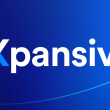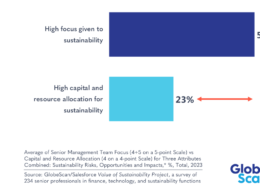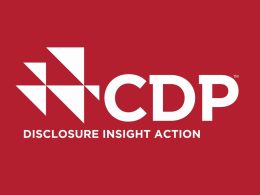As a media partner for the Asia Sustainability Reporting Awards (ASRA) 2024, ESG Post spoke with Ms. Sophia Cheng, Chief Investment Officer at Cathay Financial Holding, to explore the company’s sustainability reporting practices. Cathay Financial was recognised with Gold for Best Sustainability Report (Governance), Silver for Best CEO Letter, and Bronze for Best Diversity Reporting at this year’s awards. In this interview, Ms. Cheng discusses the purpose behind their reporting, key challenges, benefits, and how the company ensures credibility and prepares for evolving disclosure standards.
Why does your company publish a sustainability report?
Our Sustainability Report is one of the key channels for Cathay to communicate with stakeholders and an important tool for reviewing and demonstrating our sustainability progress each year. Through publishing the Sustainability Report, we not only respond to the interests of stakeholders such as regulatory authorities, investor evaluations, employees and communities regarding our sustainability efforts, but the process of preparing the report also provides a valuable opportunity to review the Group’s highlights and performance over the past year. This, in turn, serves as an important reference for formulating future sustainability strategies and target planning.
Which part of sustainability reporting did you find to be the most challenging?
Since Cathay’s Sustainability Report covers our sustainability performance and achievements from different departments and even our subsidiaries, it is always a challenge to effectively incorporate the most representative and outstanding highlights into the report within a limited timeframe. Ensuring the accuracy and precision of the content while conveying information in a clear and accessible manner to enhance communication has been another challenge as well. Furthermore, sustainability reporting standard are constantly evolving, such as GRI Standards, SASB, TCFD, TNFD, IFRS S1/S2, and so on, and each Standard emphasizes different aspects of sustainability. Besides, investor evaluation criteria for disclosure are also continuously updated. As a result, our team must stay informed of emerging disclosure trends and integrate these evolving requirements into the reporting framework and planning while ensuring the report’s core narrative remains clear and well-structured. This not only requires strong skill set among our team members but also a certain level of strategic thinking, as a result, how to build relative capacity among team presents an additional challenge.
How has your company benefitted from disclosing sustainability performance?
The benefits for us to publish sustainability reports go beyond basic regulatory compliance. our sustainability report serves as a crucial communication tool, enabling effective engagement with stakeholders and responding to their expectations, such as domestic and international sustainability ratings. Additionally, by disclosing our Sustainability Roadmap and the three strategic pillars-Climate, Health and Empowerment-along with related initiatives and progress in the report, stakeholders can gain a clear picture of our strategic priorities and efforts in advancing sustainability. This, in turn, foster greater stakeholder recognition, enhances corporate identity, and strengthens our brand value.
What steps do you take to ensure that your sustainability report is reliable and credible?
Wehad engaged a third-party verification body (BSI) to verify the report based on the GRI Standards and AA1000 AS v3 – Type 2 high-level assurance. In addition, we also engaged an Accounting Firm (PwC Taiwan) to conduct limited assurance procedures on sustainability performances and corresponding SDG outcomes selected for the report compiled in compliance with GRI Standards. The assurance was conducted in compliance with the standards published by the Accounting Research and Development Foundation in Statement of TWSAE 3000 “Audit and Review of Non-financial Information, and TWSAE 3410 “Assurance Engagements on Greenhouse Gas Statements”. In addition to external verification and assurance, we have also established an internal Guidance on the Preparation of the Sustainability Report, which was then amended in 2025 to incorporate enhanced requirements for the internal control of sustainability disclosures. This amendment aims to further strengthen the rigor of data collection and management for the report. Finally, our Sustainability Report is submitted to the Board of Directors for review, ensuring the integrity of the governance framework for sustainability disclosures.
How do you think sustainability reporting will evolve in the next five years?
Given that sustainability reporting has evolved rapidly in recent years due to increasing investor interest, regulatory development, and growing concerns over greenwashing, here are some key trends from my observation:
- Diverging Regulatory Momentum Across Regions: while regulatory framework for sustainability reporting will continue to strengthen, the implementation timelines and level of enforcement may vary significantly. The EU’s CSRD delay and potential policy shift in the U.S. could slow progress in these regions, but other markets such as Japan, Singapore, Hong Kong and Taiwan are moving swiftly to adopt and enforce sustainability reporting requirements, with some aligning closely with IFRS S1/S2.
- Investor and Stakeholder-driven voluntary disclosures: investors, consumers and rating agencies are still expecting for more sustainability disclosures. In addition, issues such as biodiversity, supply chain sustainability, inequality and social issues are gaining concerns from public and companies will need to report on a broader ESG topics, reflecting these above-mentioned expectations from stakeholders.
- More Stakeholder Scrutiny on Sustainability Reporting: regulators, NGOs, consumers and investors will be more educated and critical when assessing sustainability disclosures and claims given the increasing concerns over greenwashing.
- Advancements in Technology and AI : companies will be able to leverage more on AI, big data, ESG data analytics or even blockchain technology to improve data accuracy and traceability. These tools not only enhance sustainability data quality, but also play a crucial role in preventing greenwashing.
What advice would you offer to other companies striving to enhance their sustainability reporting practices and earn recognition in initiatives like the Asia Sustainability Reporting Awards?
Establish a Strong Foundation: follow internationally recognized frameworks, such as GRI, IFRS S1/S2, SASB, TCFD or TNFD to ensure the report meets global standards.
Also ensure sufficient resources and upskilling programs are in place to support effective ESG reporting and continuous improvement.
Develop a Clear and Coherent Narrative: define a clear strategic framework as well as relative and measurable impacts / targets to showcase how the company advance its sustainability. Also, use case studies and impact stories to make the report more engaging and relatable.
Ensure Robust Data Quality: build a systematic approach as well as an appropriate governance structure to ESG data collection and engage with third-party assurance providers to verify key disclosures, strengthening credibility and stakeholder trust.
Foster Internal Engagement & Cross-Functional Collaboration: as a high-quality report requires collaboration across multiple departments, it is important to have clear responsibility and leadership support to ensure the whole process is smooth.
Engage Stakeholders Effectively: understand expectations from stakeholders (such as investors, regulators, clients, employees, communities, and so on) and ensure the report reflects their interests.
Benchmarking: to learn from industry leaders and award winners for inspiration and best practices.





















